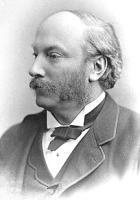| www.tmatlantic.com
Test & Soldering Equipment On-line Store |
|
D.E.V.I.C.E. (Wiki)Calculators Services |
|||||
Filter by first letter
|
Strutt, John William (Lord Rayleigh)
John William Strutt, 3rd Baron Rayleigh was born on November 12, 1842. He was an English mathematician and physicist who made extensive contributions to science. He served as president of the Royal Society from 1905 to 1908 and as chancellor of the University of Cambridge from 1908 to 1919. Lord Rayleigh’s first researches were mainly mathematical, concerning optics and vibrating systems, but his later work ranged over almost the whole field of physics, covering sound, wave theory, colour vision, electrodynamics, electromagnetism, light scattering, flow of liquids, hydrodynamics, density of gases, viscosity, capillarity, elasticity, and photography. His patient and delicate experiments led to the establishment of the standards of resistance, current, and electromotive force; and his later work was concentrated on electric and magnetic problems. Rayleigh provided the first theoretical treatment of the elastic scattering of light by particles much smaller than the light's wavelength, a phenomenon now known as "Rayleigh scattering", which notably explains why the sky is blue. He studied and described transverse surface waves in solids, now known as "Rayleigh waves". After hearing a lecture by Lord Rayleigh, William Ramsay, a Scottish chemist, began studying gases, which led to his discovery of noble gases. For their collaboration, Rayleigh and Ramsay each were awarded a Nobel Prize in 1904, in physics and chemistry respectively: William Ramsay “in recognition of his services in the discovery of the inert gaseous elements in air, and his determination of their place in the periodic system”. Lord Rayleigh "for his investigations of the densities of the most important gases and for his discovery of argon in connection with these studies”. The lunar crater Rayleigh as well as the Martian crater Rayleigh were named in his honour. The asteroid 22740 Rayleigh was named after him on 1 June 2007. The rayl, a unit of specific acoustic impedance, is also named for him. Lord Rayleigh died on June 30, 1919, at Witham, Essex. Citing www.wikipedia.org |
Site mapPrivacy policyTerms of Use & Store PoliciesHow to BuyShippingPayment




|

























